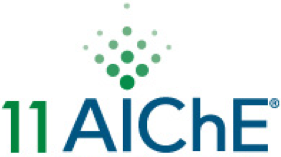

Evaluation of Membrane Separations Opportunities within Lignocellulosic Biorefining Processes: Tailoring Membrane Properties
Jennifer Leberknight, Amitkumar Gautam, and Todd J. Menkhaus
South Dakota School of Mines and Technology
Department of Chemical and Biological Engineering
501 East Saint Joseph Street
Rapid City, SD 57701
Tel: (605)-394-2422
Email: Todd.Menkhaus@sdsmt.edu
Membrane separations can be integrated into a biorefinery at many locations and offer tremendous potential to reduce water usage and energy consumption, decrease production costs, simplify purification operations, and offer opportunities for recovery of valuable co-products. Here we explore five locations for integration of membrane technology into the basic biochemical production process for fuels and/or chemicals. The biomass is initially pretreated and enzymatically hydrolyzed to convert the cellulose and hemicellulose into fermentable sugars, after which a solid-liquid clarification operation to remove solids (primarily lignin) may be employed (Membrane Separation 1). The liquid stream can then be further separated to recycle the hydrolysis enzymes (Membrane Separation 2) and/or to concentrate the sugars by reverse osmosis (Membrane Separation 3). Increased fermentation efficiency could be achieved by integrating a membrane step after fermentation to separate and recycle the fermentation organism (Membrane Separation 4), while membrane extraction or pervaporation can be used for in-situ product recovery (Membrane Separation 5). Within the various membrane processes, fouling is a major challenge to overcome. We have correlated membrane fouling tendencies within the different membrane separation locations to measureable properties of the membrane and foulants such as ionic charge, hydrophilicity, size, and surface roughness to determine why membranes foul. Through a combination of analytical and modeling approaches we postulate fouling mechanisms and identify methods to mitigate fouling. Finally, simple empirical models using variable concentrations of fouling components and quantitative membrane properties have been developed to help establish predictive performance abilities. As detailed examples, both microfiltration (Separations 1 and 4) along with pervaporation of ethanol from a fermentation broth (Separation 5), were evaluated. Both selectivity and flux must be considered in new fouling-resistant membrane designs. The unique soluble compounds (phenolics, furans, and organic acids) in the lignocellulosic derived feeds greatly complicate the fouling and separation, as will be discussed.
